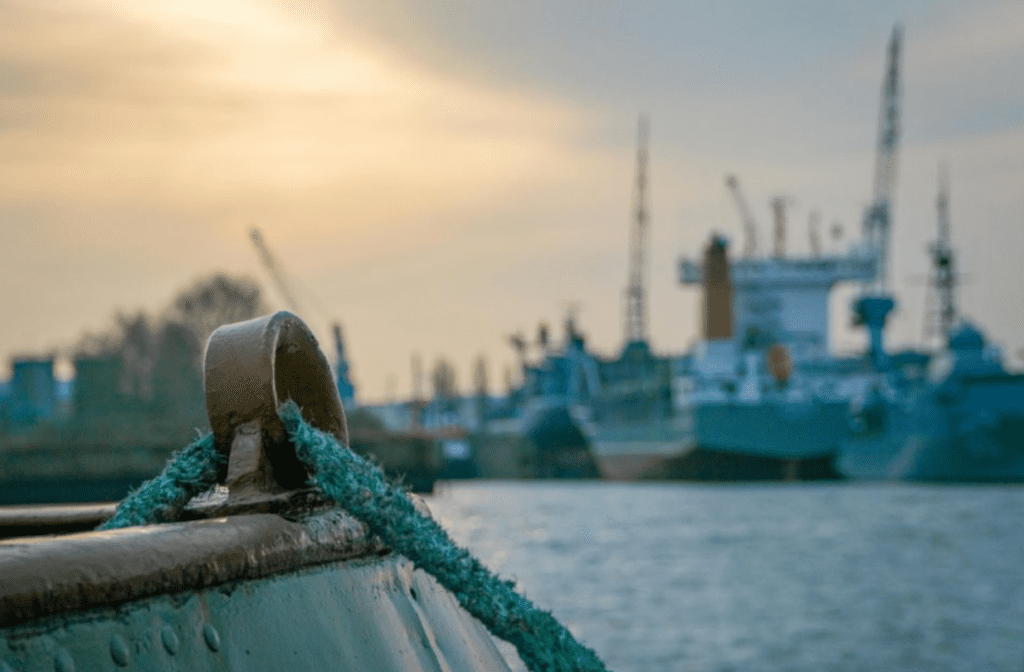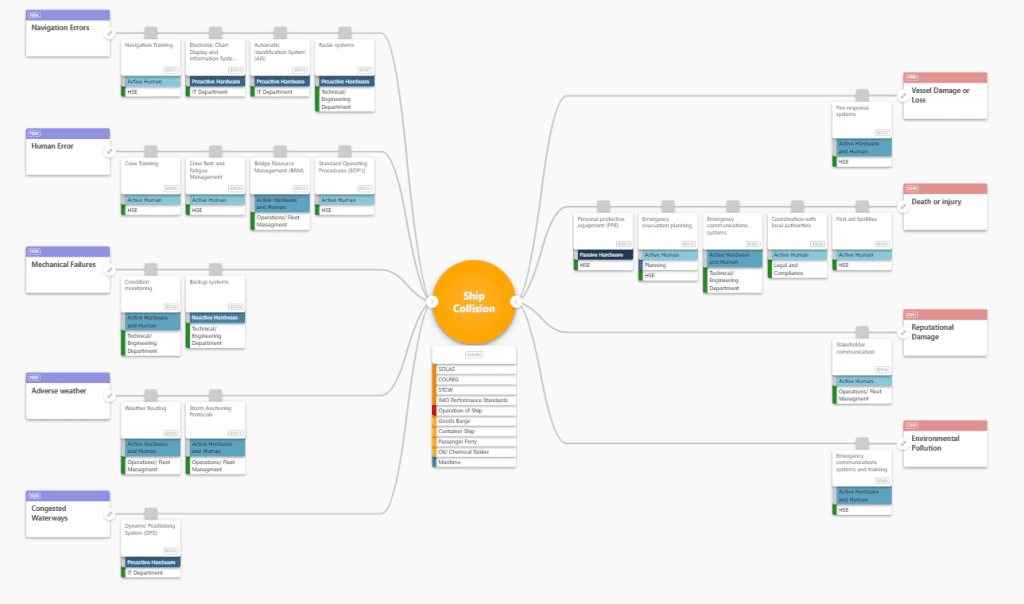Bowtie analysis in ship inspections
Ship inspections are crucial in the maritime industry for risk management and reducing accidents. The objective is to ensure operational and asset integrity to prevent maritime accidents. The catastrophic events of the Erika and the MSC Napoli incidents highlight the importance of effective inspections for maintaining ship safety. Risk-based methodologies, like bowtie analysis, are gaining popularity for controlling risks and evaluating the effectiveness of inspections.

Why use a bowtie diagram and analysis?
Bowtie risk analysis uses the concept of safety barriers, which can be physical, technical, or human. These barriers are designed to prevent, control, or reduce the impact of unwanted events or accidents. The bowtie diagram gives a clear visual overview of threats, the main event, and possible consequences. It can also be used after an incident to support analysis and learning.
By visualising the incident in a bowtie, the threats, preventive and mitigating measurers are visualised. Which can be used to further improve the risk management system. Supporting this process with structured tools like OpenRisk can help document findings more consistently and integrate them into ongoing inspection routines.
The benefits of a bowtie analysis
Using bowtie analysis can be beneficial for its visual strength and for showing the connection between causes and consequences. Additionally, it integrates operational, organisational, and technical elements into one representation, making bowtie diagrams a useful tool to maintain an up-to-date, real-time risk management system. In the maritime industry, bowtie analysis can uncover risk-contributing factors that have not yet been discovered such as a ship collision.
Click here to see ship collision bowtie in OpenRisk bowtie tool
By using bowtie analysis and diagrams, maritime stakeholders can identify underlying causes and resulting consequences of accidents associated with inspection issues. Bowtie diagrams provide insights into the role of insufficient inspection practices in the development of maritime accidents and the severity of the resulting consequences.
A bowtie analysis offering a detailed and visual approach to understanding and managing risks. It enhances the ability to uncover potential hazards, evaluate inspection effectiveness, and ensure safer maritime operations.
For more control over your Barrier Management strategy, you can implement Presight Barrier Management allowing you to ensure compliance, and a proactive approach. With Presight Barrier Management, you can monitor the health of your barriers as part of your process safety strategy. This gives you a full overview of both human factors and technical elements. With Presight Barrier Management you can confidently demonstrate that your assets are safe and that you know it.

Picture of a bowtie with ship collision accident in the maritime industry as the top event. Click here to view the bowtie in Presight OpenRisk: Ship Collision
References:

